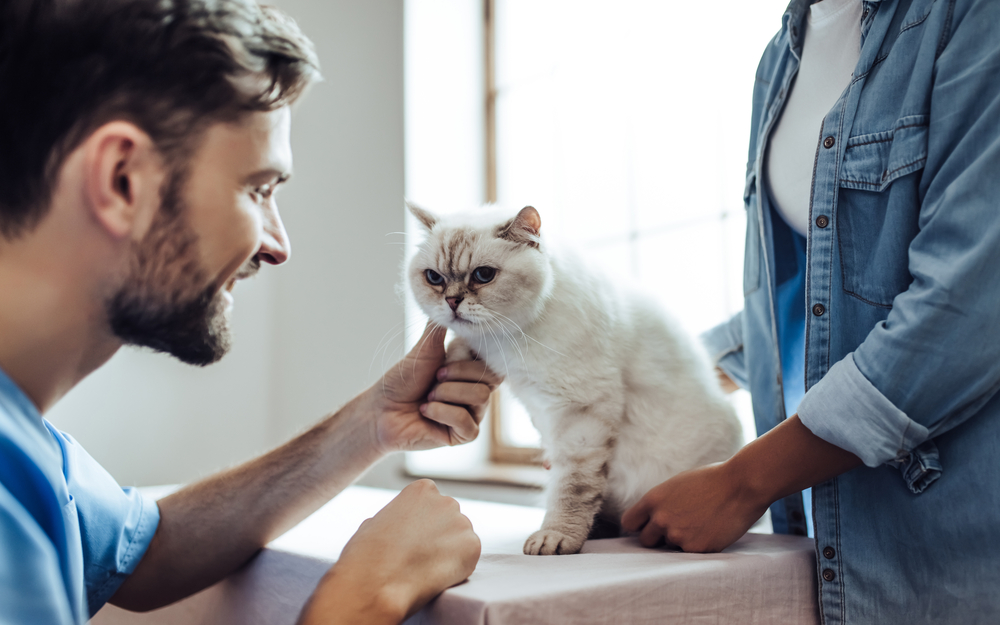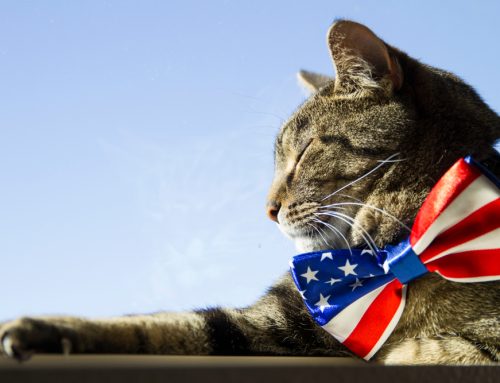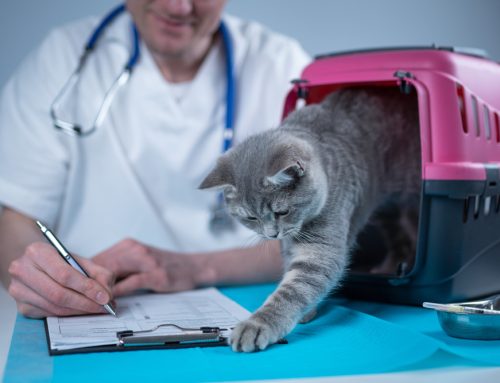At a glance, your cat may appear quiet and composed, but on the inside, chronic stress may be plaguing them. Despite their cool exterior, our feline friends are highly sensitive to changes in their internal and external environments. When changes occur, stress is an automatic—and unhealthy—response.
Unfortunately, cats express stress in peculiar and seemingly unrelated ways, which can make identifying and addressing your feline friend’s condition difficult. Check out our Veterinary Behavior Solutions team’s guide to recognizing, addressing, and minimizing feline stress.
Stress—the silent feline enemy
As with any buzzword, the term stress has been lost in translation through misapplication and overuse. In a veterinary context, stress is “an emotional and physical response to a change in the animal’s environment.” Because change is inevitable, stress is a normal and expected part of life. Some stress is actually a good thing (i.e., eustress) and can be self-preserving (e.g., acute or short-term stress that prompts a fight or flee response). However, when stress is prolonged (i.e., chronic), caused by physical pain, or because a pet is unable to cope with the stress-induced changes, distress occurs and their health is compromised
Acute versus chronic stress in cats
Acute or short-acting stress comes on quickly in response to a perceived or real threat but subsides in an equally rapid fashion after the threat passes. After an acute stress episode, vitals return to normal, and stress hormones (e.g., cortisol and epinephrine or adrenaline) are cleared from the body.
Chronic stress is more persistent—causing consistently elevated levels of regular stress hormones (e.g., cortisol). This steady state prevents complete stress hormone clearing and results in poor health.
Stress triggers in cats
Like humans, every cat has their own individual stressors (i.e., triggering events). Personality, genetics, life experience, and early environmental exposures determine a cat’s unique stressors. In other words, some cats will perceive mild inconveniences (e.g., a relocated litter box) as being extremely stressful. Understanding and accepting the factors that cause your cat’s stress can help you become more empathetic to their emotional wellbeing. Consider which of these common stressors may be triggering your cat’s anxiety:
- Pain and illness — Discomfort, weakness, and pain make cats feel vulnerable, scared, and confused.
- Resource access or change — Changing food and litter brands, relocating your cat’s resources (e.g., food, water, litter box), or decreasing resource availability (e.g., putting your cat on a diet or moving their litter box) can trigger anxiety.
- Bullying — Aggression or resource guarding by other household pets is upsetting.
- Environmental changes — These include new or rearranged furniture, new or absent pets or family members, and unfamiliar scents.
- Travel — Frequent travel (e.g., recurring medical treatments, frequent relocation or rehoming) is disruptive to your cat’s routine. A cat’s motion sickness can also cause or worsen travel-related stress.
- Loud or sudden sounds — Thunderstorms, trash trucks, fireworks, and appliances can cause noise sensitivity in cats.
- Overhandling — Many cats are sensitive to excessive petting or manipulation.
Common stress signs in cats
Feline experts have linked certain behaviors and personality changes to cats’ increased stress. However, their presence does not indicate the cause of a cat’s stress, and because many of these signs can also indicate physical illness, always begin by scheduling a comprehensive physical examination with your primary veterinarian. Cats’ most common stress signs include:
- Inappropriate litter box habits — Previously well-trained cats may begin inappropriately eliminating or defecating throughout your home. Feline idiopathic cystitis (FIC) is a painful and stress-induced inflammatory condition that causes painful urination. Affected cats avoid their litter box because they associate it with FIC pain. Alternatively, bullied cats may feel exposed and vulnerable while using the litter box or be prevented from accessing the box.
- Urine spraying or scratching — Cats may display increased territory-marking behavior when they feel stressed—especially if the perceived threat is inaccessible (e.g., a stray cat outside the window). Thresholds and vertical surfaces near the window or door are common urine-marking and scratching targets.
- Personality changes — Chronic stress can make cats more irritable, frightened, or insecure. Your cat may be demonstrating uncharacteristic aggression, hypersensitivity, hiding, or attention-seeking behaviors. Formerly friendly cats may avoid social situations, preferring to be alone.
- Excessive grooming — Grooming stimulates endorphin release and can promote calmness. In an attempt to self-soothe, a stressed cat can injure their skin and coat through excessive licking or biting. Thinning hair or bald areas are common—especially on the abdomen, flank, and limbs.
- Appetite changes — Eating is another feel-good behavior that cats use to cope with stress. This can quickly lead to unwanted weight gain if your cat is free-fed or stealing food from other pets. Alternatively, some stressed cats will lose their appetite and refuse to eat.
How to help your stressed cat

Because chronic stress can indicate or create a serious health issue, the first step to helping your cat is to schedule an appointment with your primary veterinarian. If they detect a medical cause, treatment may be enough to resolve your cat’s stress.
If your primary veterinarian determines that no physical illness is causing your cat’s anxiety, they may refer your cat to a veterinary behaviorist, such as our Veterinary Behavior Solutions team, so we can assess their behavior-based signs and recommend effective therapies. To uncover your cat’s stress triggers, our team will work closely with you to review and analyze your feline friend’s at-home behavior and their daily routine. Depending on the suspected cause of your cat’s stress, their treatment may include medications, dietary supplements, home modifications, or new ways to interact positively with your cat.
Feline stress is a sneaky and challenging condition, but early recognition and intervention can protect your cat from unnecessary mental and physical harm. Contact our Veterinary Behavior Solutions team for more information about feline stress and behavior, or to schedule your cat’s consultation.







Leave A Comment